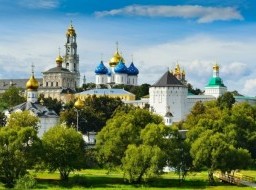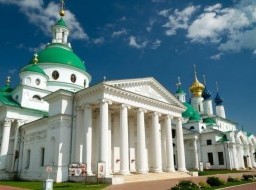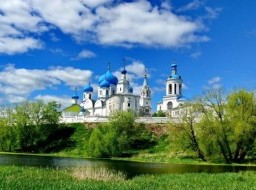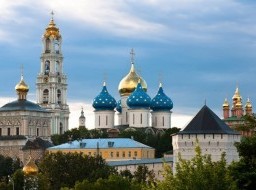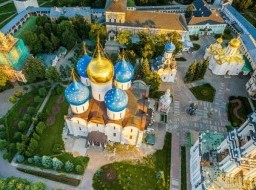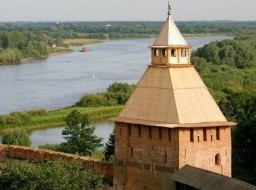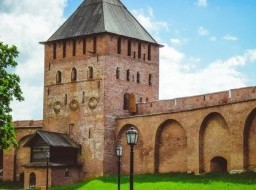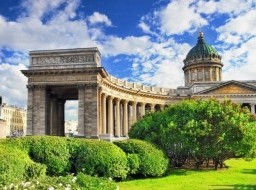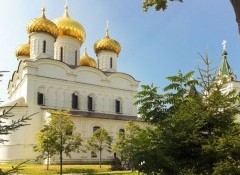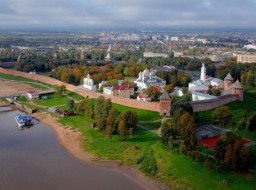Novgorod Kremlin
Novgorod Kremlin (also Detinets) stands on the left bank of the Volkhov River in Veliky Novgorod about two miles north of where it empties out of Lake Ilmen. History The compound was originally the site of a pagan burial ground upon which the first bishop of Novgorod, Ioakim Korsunianin, built the Cathedral of Holy Wisdom upon his arrival in the area in 989 or so. Thus the compound was and remained largely an ecclesiastical site, although many Novgorodian boyars built their houses in the southern part of the Detinets. The first reference to fortifications on the site dates to 1044, with additional construction taking place in 1116. These were probably earthen embankments topped by a wooden palisade, although stone towers and walls were built in 1302. Archbishop Vasily Kalika (1330–1352) rebuilt the stone wall along the eastern side of the Detinets in 1331–1335. The rest was completed in stone only in 1400. In 1433, under the rule of Archbishop Evfimy II (1429–1458), a council hall for the nobility council of Novgorod Republic was built as a part of the episcopal compound. Today it is called the Episcopal Chamber or the Chamber of Facets, due to its elaborate Gothic vaults, one of the easternmost examples of Brick Gothic. In 1437, part of Vasily's walls collapsed into the Volkhov River and were rebuilt by Evfimy II, too. Modern Construction The current fortress was built between 1484 and 1490 by Muscovite builders in the wake of Grand Prince Ivan III's conquest of the city in 1478; a third of it was paid for by the Novgorodian archbishop Gennady, a Muscovite appointee (1484–1504). It is a large oval 545 metres long and 240 metres wide with nine surviving towers (three additional towers have not survived). The tallest tower, the Kokui tower, is capped by a silver dome. It was built in the 18th century, and its name is of Swedish origin. Today it is possible to enter this tower and climb to the top. The walls are 1,487 metres in circumference. Inside Layout The main buildings in the Detinets are the Cathedral of Holy Wisdom and the archiepiscopal/metropolitan compound in the northwestern corner. To the south of this, across the plaza in which stands the Monument to the Thousand Years of Russia, is the Novgorod Museum and the Novgorod Regional Library, housed in what had in the imperial period been the administrative building of Novgorod. The museum houses a fine icon collection and other artifacts from the city's history. Several smaller churches (the Church of the Intercession of the Mother of God along the southwestern wall near the Pokrovskii (Intercession) and Kokui towers, and the Church of St. Andrew Stratilates near the southeastern wall, and other buildings are found south of the museum, an area of the Detinets that has been left a park. There are numerous references in the chronicles to no longer extant buildings, including chapels over the gates (there were six in the republican period) and the Church of Sts. Boris and Gleb, built by Sitko Sitinits, who is thought to be the historic source for the legendary Sadko. An eternal flame to the soldiers of the German-Soviet War can be seen just inside the west gate of the fortress. A public beach has been formed between the southeastern part of the Kremlin and the Volkhov river. |

